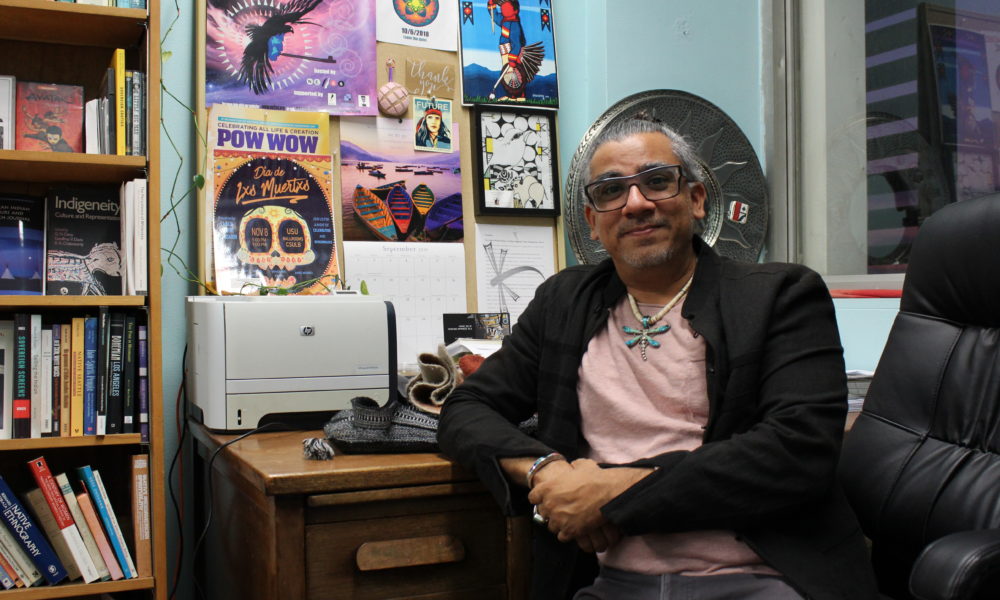Motivated by the lack of information on Caxcanes, a minority indigenous group in Mexico, Long Beach State religious studies professor, Gabriel Estrada took it upon themselves to shed light on their culture.
Estrada’s grandfather was from Juchipila, Zacatecas, and their patrilineage goes back to the Caxcan people, who were native to the region of Mexico and spoke a dialect of Nahuatl.
As a kid, their grandfather would tell them stories that would involve animals such as rabbits, coyotes and eagles. Of course, Estrada thought they were just children’s stories about animals with no deeper meaning.
It wasn’t until Estrada studied Native American literature that they felt otherwise.
“I realized that these stories are actually our religion, beliefs and culture,” Estrada said. “They’re really particular to who we are as Caxcanes, but they also relate somewhat to stories that are told by other indigenous peoples in the southwest, because we have similar animals.”
The more they read about native history, the more Estrada realized most of it was about the Aztecs. There was only some information about the Caxcan people in regard to their conflicts.
“I could read history about Greeks, I could read history about all kinds of people, but I could never read history about Caxcanes in detail because it’s such a small group,” Estrada said.
He decided to search for the little-known history of Nahuatl and the Caxcan people.
Estrada has traveled to Zacatecas every summer or winter for the past 20 years to learn something new about their ancestors and the language.
As a child, they were never taught to speak Nahuatl. Estrada’s grandfather’s generation was the last to speak it fluently, so their father wasn’t able to pass it on to them.
During their trips back to Mexico, they took classes on the language.
“The classes were intensive,” Estrada said. “They were one month in the summertime, but they were eight hours a day. So I got a lot of practice in.”
Along with teaching the language, the classes consisted of document analysis to learn about native Mexican history.
Estrada was able to learn a lot and bring it all back with them to share and teach. However, they weren’t always supported in their research.
“Even in Zacatecas people were discouraging me from talking about Caxcanes,” Estrada said. “Even when we’re there…we’re discouraged from talking about local people.”
According to Estrada, people in Zacatecas and in other parts of Mexico emphasized learning about the Aztecs because they believe their history is more important than other indigenous peoples’ history.
Despite having been discouraged from learning about the Caxcanes, Estrada continued with their research and was able to develop classes that they could teach at Long Beach State. Now every three years, Estrada teaches two courses about Nahuatl.
“They are passionate about their teaching and scholarship, and are able to bring their vast and unique experiences and knowledge to our students,” said religious studies department chair, Sophia Pandya.
Caxcanes and Nahuatl are present in Mexico today but are spoken about in the past tense, according to Estrada. Their research helped bring the history of Caxcanes and Nahuatl to the present for them and for students at CSULB.
Students no longer learn just about the indigenous majority.
“Frankly, there are very few people that do what they do, which makes us at CSULB incredibly fortunate to have them,” Pandya said.
Despite not knowing the language or the full history of their ancestors as a kid, Estrada has always felt a connection to them.
“Learning more didn’t change how I felt, but it helped give me words to explain what the feeling is,” Estrada said.
The next time Estrada will be teaching religious studies 313A will be in the fall of 2021 and 313B will be spring 2022.




